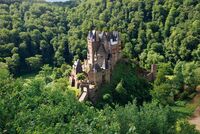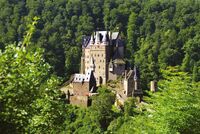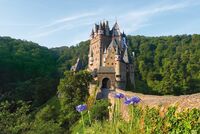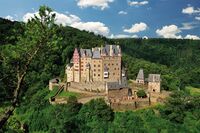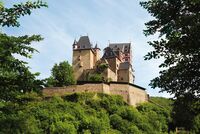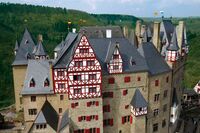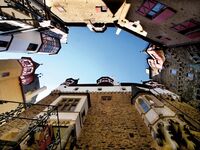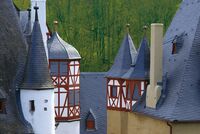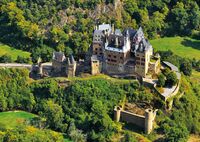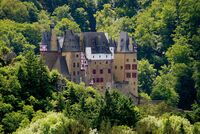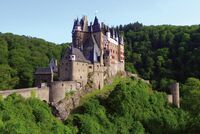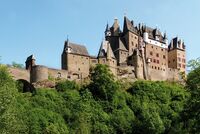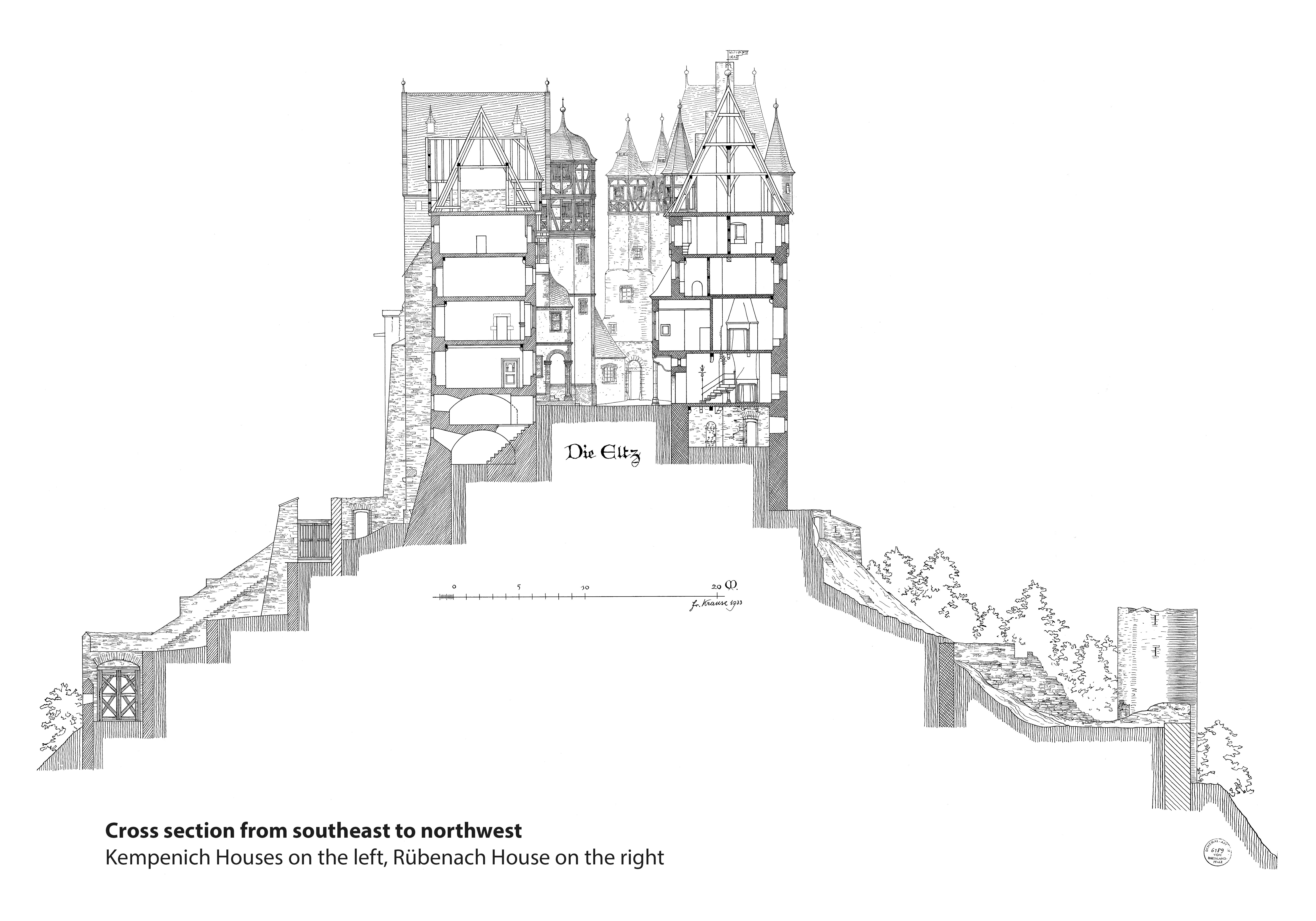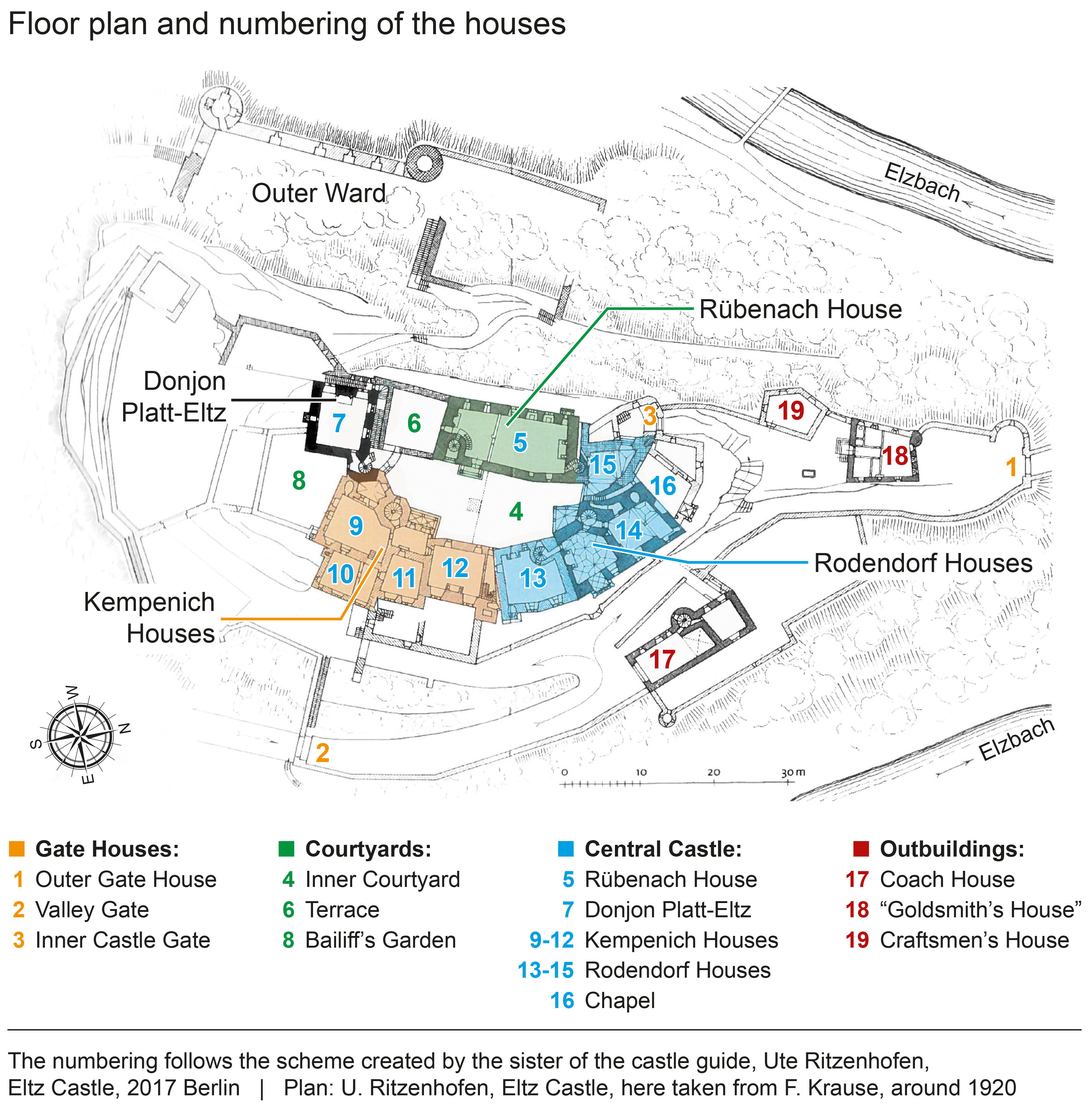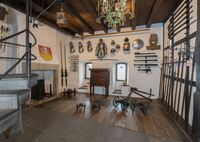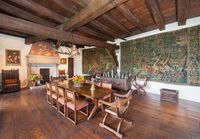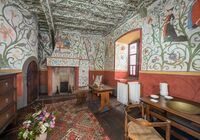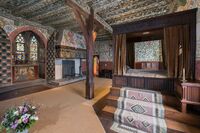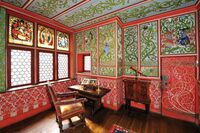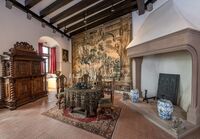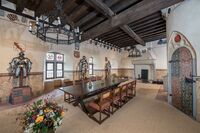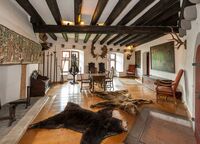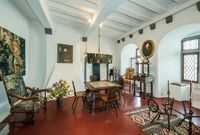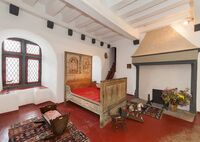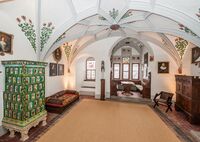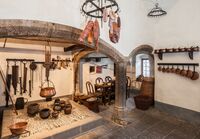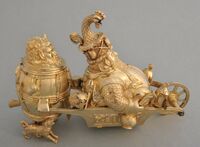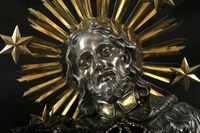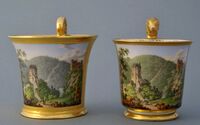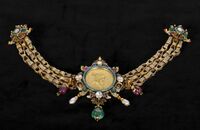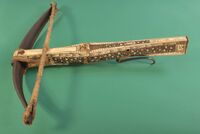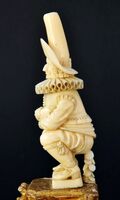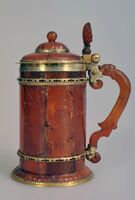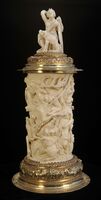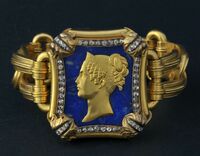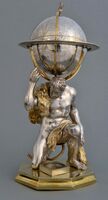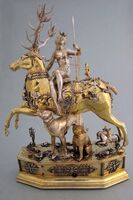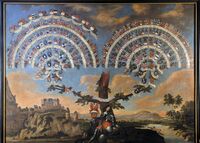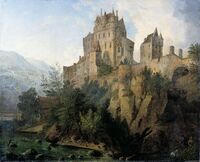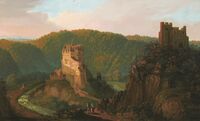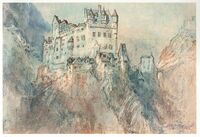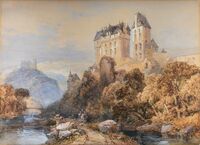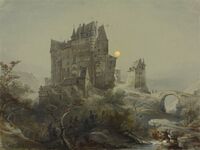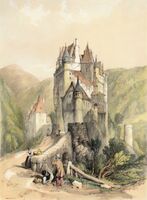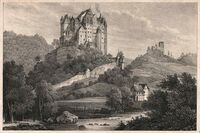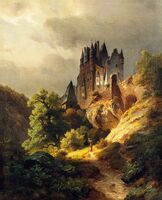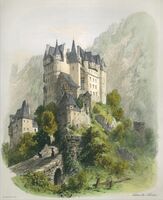Have any questions?
+44 1234 567 890
What makes Eltz Castle so magic
Eltz Castle is different. It remained unscathed by wars. It has been owned and cared for by the same family from when it was built until today. Its architecture has no comparison and many of the original furnishings of the past eight centuries still remain in place. It houses rustic suits of armour, swords and halberds as well as magnificent courtly gold and silver artefacts. It towers high on a large rock set deep in a valley. It stands in the midst of the Eltz Forest, a nature reserve of serene beauty, which offers numerous hiking trails and outdoor areas for sports and recreation for all age groups.
The section “The Castle” shows and describes the highlights of our medieval fairy-tale castle. It gives information about the Architecture & Setting as well as Plans & Construction Timeline of the “quintessential castle” (Georg Dehio). It also gives a Guided Tour of the Castle and Treasury, Historic Depictions and the Eltz Nature Reserve.
Enjoy your stay in our ancestral home.
Johann Jakob Graf zu Eltz.
The unique architecture and position of Eltz Castle
The architecture of Eltz Castle is the main attraction: its eight towers, soaring up to 35 metres high, its oriels, roofs, timber frame structures and turrets make it the epitome of a medieval castle.
What makes it iconic is also its unrivalled location: set in the midst of a forest, deep down in a valley, far from any modern buildings and entirely surrounded by a natural paradise, it allows visitors to experience a medieval dream.
In the Gallery you can see the castle from all directions.
Sections, Plans and Building History
The castle was built to secure the trade routes between Mosel, Maifeld and Eifel. There are remains of Celtic and Roman fortifications in this spot too.
The castle’s situation in such a strategic position meant that it remained unconquered until the invention of long-range catapults (trebuchets) and the erection of siege castles under Elector Balduin of Trier in the early 14th century, who eventually forced the rulers of Eltz to surrender in 1336.
The General Plan shows the floorplan of the castle complex with the different houses which were inhabited by the three branches of the family, the outer castle and the outer fortifications.
Further Information regarding – “The architectural chronicle of the castle” and “Nine centuries House of Eltz“– can be found in our History section.
The guided tour – a journey through nine centuries in one Castle
The tour of Eltz Castle (for entrance fees, times and duration see Opening Hours, Entrance Fees and Practical Information) is an exciting and informative but also entertaining journey through 900 years of German architecture and culture.
You will discover a wide range of Medieval and early modern architecture and many interiors that have survived largely unchanged. The Castle houses artworks and crafts of European, national, or regional significance as well as weapons and every-day items from 8 centuries.
The Gallery shows photographs of the interiors that are visited during the guided tour.
The Treasury of Eltz Castle
The Eltz Castle Treasury comprises one of the most important private collections with more than 500 exhibits from nine centuries (see also the picture gallery on this page).
The exhibition focuses on artworks by German gold and silver smiths, particularly from Augsburg and Nuremberg. Other items on display include precious glass and porcelain, extravagant jewellery, ceremonial and real weapons as well as other curiosities from more than 800 years.
The Gallery shows 15 of over 500 exhibits in the treasury.
Important Information for all Visitors:
The numerous attractions in the Armoury and Treasury can be visited at any time during the opening hours. The exhibits are well labelled. There are no guided tours through this exhibition. Your entrance ticket includes your visit to the Armoury and Treasury.
Foreign visitors are given a free brochure with an English translation of the labels at the entrance to the museum.
Historic Depictions of Eltz Castle
By the end of the Middle Ages aristocratic families preferred residing in residences and palaces in towns rather than in the old castles. This is the reason why castles, including Eltz Castle, were only rarely depicted in art, except possibly as evidence of the ancestral home in a genealogical table.
This changed with the onset of the Romantic period after 1800. Eltz Castle became the object of Romanticists’ dreams, and a visit was considered obligatory for painters and writers from all over Europe. Visitors to Eltz Castle included, among others, the British painter William Turner and the French author Victor Hugo.
After 1820 travel journals and graphic art of Eltz Castle were published in great numbers and sold throughout Europe. One could refer to them as an early form of today’s Instagram boom.
In the Gallery you will find pictures of the Castle from three centuries.
A Castle set within a Natural Paradise
Surrounded by forests, far from any roads or modern buildings, Eltz Castle epitomises the fantasy of the untouched, unpopulated Middle Ages like no other historic building in the country.
More than 300 hectares of the Eltz Forest have been declared a nature reserve by Flora-Fauna-Habitat and Natura 2000. This comprises the flood meadows of the Eltzbach Valley as well as the forests on the steep slopes that once supplied fuel for the castle. The forest has been declared an "Arboretum", a forest with a particularly rich variety of rare indigenous and foreign tree species.
The Eltz Nature Reserve is home to all the typical, and also some very rare, animal and plant species found in or near water, in brushwood or in forest biotopes.
This precious biotope can only survive if hikers, horse-riders and cyclists remain on the dedicated paths.
Please help us to preserve this natural paradise.
Please comply with our house rules in the Eltz Forest.
